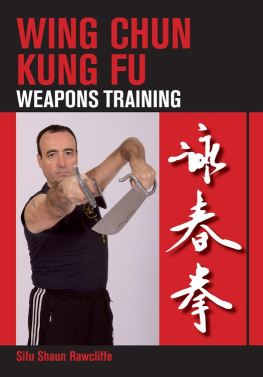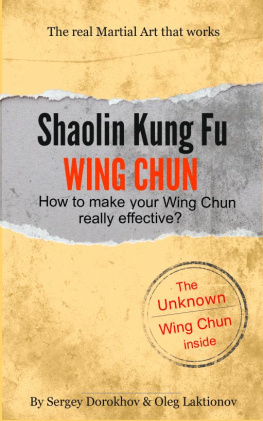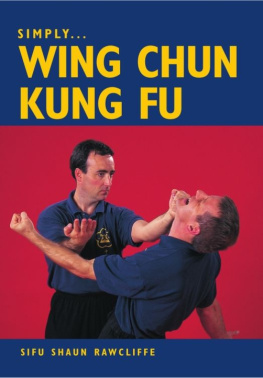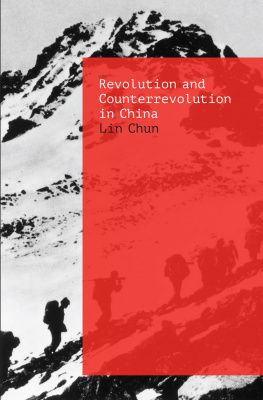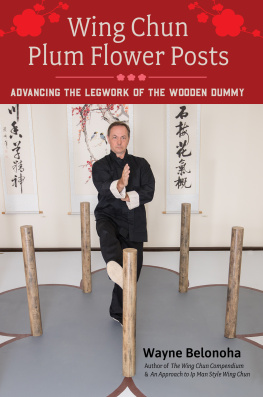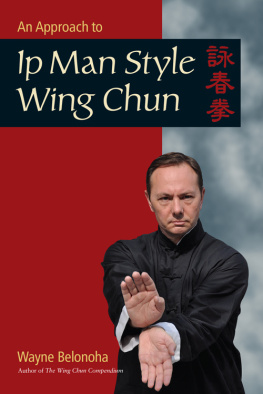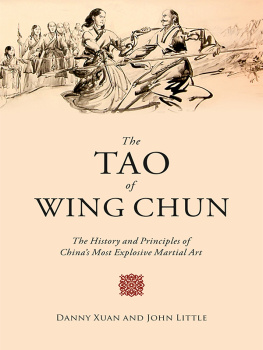About The Authors
In 1995, Y. Wu and Rene Ritchie met through the Internet Wing Chun Mailing List. They soon began discussing Wing Chun, finding much common ground and opportunity for exchange. At about the same time, Rene Ritchie began publishing his Wing Chun Archives site on the World Wide Web. In late 1995, Robert Chu and Rene Ritchie made contact through Ritchies Yuen Kay-San Wing Chun kuen Homepage, and a similar dialog began. As work progressed on the Wing Chun Archives site, and the material began to solidify, it was realized that what was often considered conflicting information was, in fact, complementary. It soon became apparent that the information could be of great interest to the larger Wing Chun community. At Y. Wus suggestion, work on Complete Wing Chun began in earnest. As Robert Chu, Y. Wu, and Rene Ritchie all shared a similar passion for Wing Chun kuen and a keen desire to preserve its history and methods, it was only natural that they collaborate on the book. Work was completed almost entirely over the Internet via e-mail and by fax and phone. Technology allowed the authors to collaborate across three countries and two continents almost instantaneously. It is doubtful that in any time past, or with any other medium of exchange, this work could have been possible.
Robert Chu has been involved in martial arts since 1972, and specializes in Wing Chun kuen. Over the years, he has been fortunate to learn several versions of the art such as the Yip Man style from several prominent instructors, including his current teacher Hawkins Cheung, and the Gu Lao and Yuen Kay-San styles from his good friend and teacher Kwan Jong-Yuen. In addition to his Wing Chun knowledge, Robert Chu has instructor rankings in Hung ga kuen and Lama, is a practitioner of Yang and Sun style taiji, Hebei xingyi and baguazhang, and is a successor to Lui Yon-Sangs fei lung fu mun combat staff system in the United States. Robert Chu has also written many articles as a freelance writer in publications such as Inside Kung-Fu, Video Review, Wing Chun Viewpoint, and the Wing Chun Today newsletter. He also produces a quarterly newsletter called Chus Wing Chun, for practitioners of his system of Wing Chun kuen. He is currently working on several books including Chus Wing Chun Kuen Po, Combat Methods of Wing Chun (with Gary Lam), and the Wing Chun Weapons Arts. Robert Chu lives in California where he practices Chinese medicine including diet, herbology, acupuncture, qigong healing, and tui na.
Y. Wu has been involved in Wing Chun since 1984. He is a practitioner of Nanyang Wing Chun under S. Y. Liu and of Yip Man style Wing Chun under Victor Leow. In addition, Y. Wu is a practitioner of Yang Chienhuo style taijiquan, taiji ruler qigong, baguazhang, and ngok ga kuen. Author of The Nanyang Wing Chun Primer Vol. 1, and the forthcoming The Nanyang Wing Chun Primer Vol. 2 and 3, Y. Wu lives, works, and practices in Southeast Asia.
Rene Ritchie has been studying the Yuen Kay-San style of Wing Chun under the guidance of Ngo Lui-Kay since 1990. He has written articles for Martial Arts Masters magazine and the Wing Chun Today newsletter (www.wing-chun-today.com), has created and maintains the www.wingchunkuen.com site on the Internet World Wide Web and is currently working on several forthcoming projects. Rene Ritchie works and practices in Eastern Canada.
ACKNOWLEDGMENTS
The authors would like to thank Mark V. Wiley for recognizing and believing in the potential of this work. Eddie Chong, sifu of Pan Nam Wing Chun, for sharing his knowledge, and John Murphy and Garrett Gee, sifu of Hung Suen Wing Chun, for contributing their chapter. Also, many thanks to Jane Hallander for her photographs of Pao Fa Lien Wing Chun, Reiner Klimke and Andreas Hoffman sifu for their notes on Jee Shim Wing Chun (Chi Sim Ving Tsun), Ilya Olshanetsky and Andrej Moskwitin for their notes on Vietnamese Wing Chun (Vinh Xuan), and Y. C. Yeung for his kind help on several of the branches of Wing Chun. The work would have been considerably lessened without their generous contributions. Thanks as well to the Internet Wing Chun Mailing List, created and maintained by Marty Goldberg and Robert Gillespie, an outstanding forum for exchange among Wing Chun practitioners (information on the WCML can be obtained by sending e-mail to majordomo@efn.org with the message body reading: info wingchun).
Robert Chu would like to thank Hawkins Cheung, Kwan Jong-Yuen, William Cheung, Koo Sang, Augustine Fong, Eddie Chong, Eric Kwai, Jeung Ma-Chut, Gary Lam, Johnny Wong, Allan Fong, Henry Moy and the Moy Yat Wing Chun family for sharing their Wing Chun. Special thanks to his students and good friends who have taught him as much as he taught them, James Ng, Stephen Eng, Anant Tinaphong, all his New York students, and all his Los Angeles students, especially, Stephen Wenger, Patrick Lee, Dimitris Horiatis, Robert Ting, David Young, and Peter Kwong who have supported him over the years. Also special thanks to Robert S. Weinberg Sensei for starting him on the path to martial arts and his brothers, Charles, Johnson and Douglas Chu, who kept him inspired. Also special thanks to his two partners and sworn brothers, Rene Ritchie for sharing with him his Yuen Kay-San Wing Chun kuen, and to Ng Yew-Mun, who shared his Nanyang Wing Chun kuen on his brief visit. It was their urging that led him to the completion of this project despite his dislike for rewrites. He couldnt ask for two better partners. Most of all, special thanks to his beautiful wife, Pauline, for putting up with mistress Wing Chun for all these years.
Y. Wu would like to thank and express his appreciation for the years of friendship and knowledge from Victor Leow of the Intelligent Combative Arts Network Australasia, his sworn senior kung-fu brother, mentor, and above all teacher (and author of Virtual, Intelligent, Kinaesthetically Oriented Geometric Articulations (VIKOGA): Authenticated Mindwill Wing Chun Gungfu). Thanks also go to big brother Robert Chu for generously sharing his knowledge of Wing Chun kuen; brother Rene Ritchie for his Yuen Kay San Wing Chun kuen and vast knowledge of the history of Wing Chun kuen; sifu Hawkins Cheung for his entertaining and highly knowledgeable views on the application of Yip Man Wing Chun kuen and the Wing Chun baat jaam do, and Gary Lam for his insights into the late Wong Shun Leungs methods. Special thanks to Yap Boh Lim, S. Y. Liu, Leong Lin Heng, Beh Lau Seng and Hui See Lim, all great teachers from various martial arts traditions who have contributed to his knowledge. In addition, thanks to his student Long Tian Ching for his photography and Alan Ang who started him on the Internet and keeper of the Nanyang Wing Chun Website at http://sunflower.singnet.com.sg/-angalan. Last but not least, many thanks to his wonderful one in a million wife Alice for her tolerance, understanding and love.
Rene Ritchie would like to thank his teacher, Ngo Lui-Kay (Ao Leiqi) for sharing with him grandmaster Sum Nungs teachings of Yuen Kay-Sans art and for his continual support, encouragement, and assistance with this project and others. In addition, thanks to his classmates Antony Casella, Georgia Dow, David Johnson, Deon Weir, and Wilson Woo for all their assistance. Also, thanks to Yuen Jo-Tong, Y. C. Yeung, Dan Lam, Bud Shapard, and Michael Engle of the Yuen Kay-San style and to Jim Roselando and the many other Wing Chun enthusiasts he has had a chance to converse with over the years.
Thanks also to Kenny Fung for his help with Chinese language and culture. Lastly, special thanks to his co-authors and big martial brothers Robert Chu and Y. Wu for sharing with him their knowledge and widening his understanding of the many branches of the art.
CHAPTER 1
Yip Man Wing Chun
Yip Man Wing Chun, the first system of Wing Chun kuen to be taught publicly has become one of the most popular Chinese martial arts in the world today. The modern history of Wing Chun (also commonly romanized as Ving Tsun and Wing Tsun by many of Yip Mans descendants), began with the changes wrought by the Communist takeover in 1949. With his property and wealth taken from him under the communist regime, Grandmaster Yip Man fled China and came to Hong Kong. Yip Mans misfortune, however, became the free worlds blessing, for soon after arriving in Hong Kong he began his career as a professional martial arts instructor.



